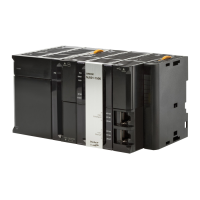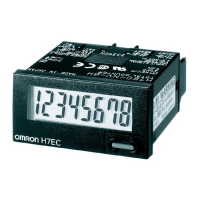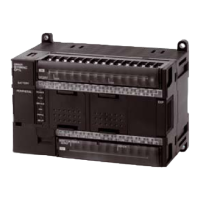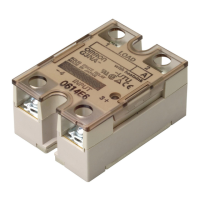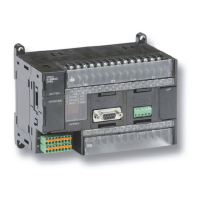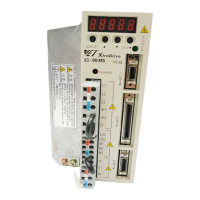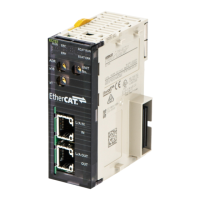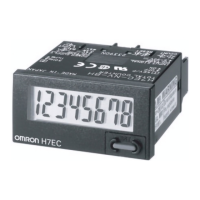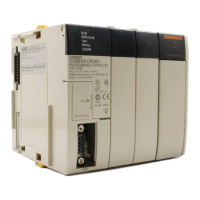5-15
5 I/O Memory
CP2E CPU Unit Software User’s Manual(W614)
5-7 Counter Area (C)
5
5-7 Counter Area (C)
The Counter Area contains Completion Flags (1 bit each) and counter PVs (16 bits each). A Comple-
tion Flag is turned ON when the counter PV reaches the set value (counting out).
Completion Flags and counter PVs are automatically retained in the built-in non-volatile RAM even if
the power supply is interrupted.
Counter numbers range from C0 to C255.
.
z Types of Counters
The following table shows which instructions are used to refresh counter PVs in BCD and binary
mode.
Counter numbers 0 to 255 are used by all counters given above.
Built-in high-speed counters 0 to 5 do not use counter numbers.
Overview
Notation
Range
Details
Counter instruction BCD mode Binary mode
COUNTER CNT CNTX
REVERSIBLE COUNTER CNTR CNTRX
C 002
Counter number: 002
I/O memory area designator: C
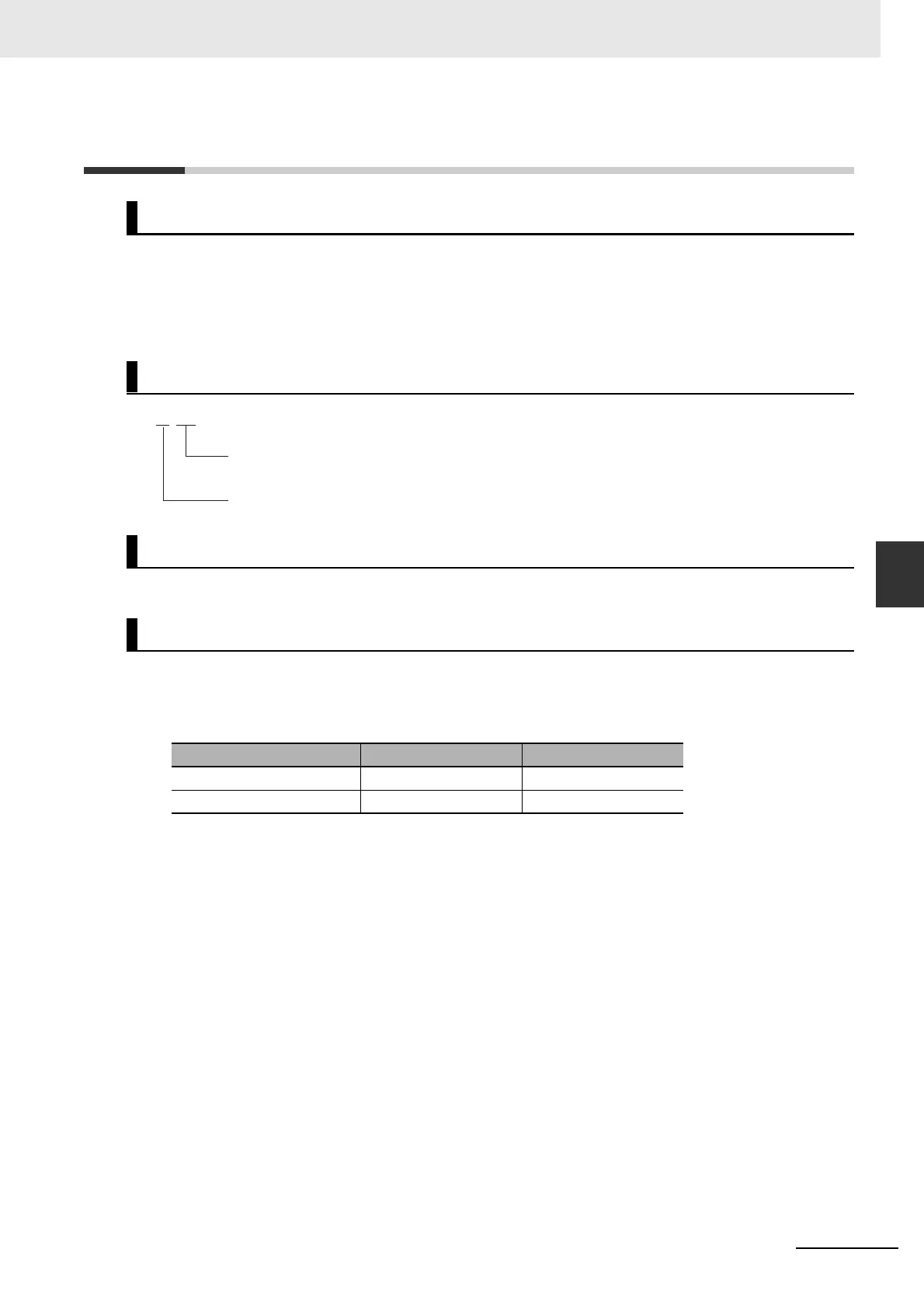